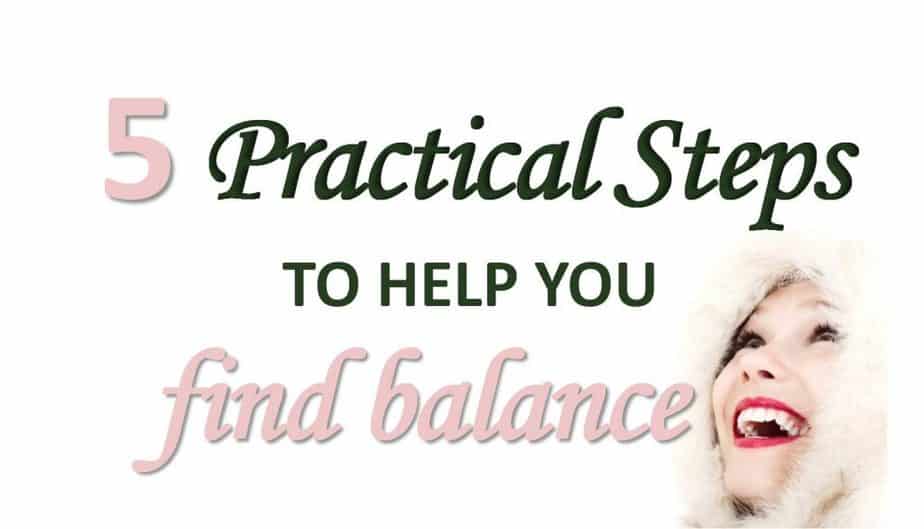Three months ago, I weighed 185 lbs. Today, I’m at 165 lbs — and no, I didn’t change my diet or hit the gym.
See, I have five kids: a teenager, an 18-month-old, and every demanding age in between. Time for exercise is a luxury I don’t have.
Or so I thought…
It turns out, people make time for the things they prioritize.
*As an Amazon Associate I earn from qualifying purchases. This post may contain affiliate links from Amazon or other publishers I trust (at no extra cost to you). See disclosure for details.
The problem is, it’s hard to prioritize exercise when it’s a slow painful chore you have zero motivation for beyond the first week.

To lose 20 lbs of baby weight and that apron belly — and keep it off, I needed an activity that I was intrinsically motivated to pursue. Something that felt like a mental reward more than a physical chore. Something where even five minutes a day made a world of difference.
VR gaming (gaming in virtual reality) turned out to be just that thing for me, and I show you everything I did in this blog post and video.
NB: Dates may be off because it’s taken me nearly a year to complete this piece (full-time job 😔)
- I got a VR headset (instead of a gym subscription)
- I stopped trying to spot-reduce fat
- I started with games that played to my strengths or excited me
- I set play time as reward time (instead of workout time)
- I gamified play time with online competitions
- I challenged myself to play a set amount of minutes each day
- I moved on to games that target my weakest muscles
- Which VR headset should you choose?
- Fun is how you *keep* the weight off
I got a VR headset (instead of a gym subscription)
TL: DR. VR headsets are more time and cost-effective, make exercise more enjoyable, and they remove the need for a gym commute. If you’re lucky like me, you stumble upon them while exploring virtual travel.


Let’s unpack all those pros:
- At around $250 (lifetime) for entry-level VR Headsets, they’re arguably cheaper than the average $28.58 monthly gym subscription ($343 per year).
- Research also shows that VR makes you enjoy working out more, reduces how mentally challenging you perceive your workout to be, and makes it easier to stick to your routine.
- You’re so positively distracted and entertained that you underestimate how much energy you exert. It then takes longer to start feeling sore — so you’re working out for longer and harder. Until you put down the headset and realize you can’t feel your arms, that is 😂
- You don’t have to dress up or spend time commuting to the gym.
- A VR headset fits in your bag and around your schedule. I recently traveled for a week, and best believe I took it with me and worked out every day.
My only complaint so far is that it’s harder to target some muscles in your midsection or to do more intense strength training.
You also need to buy some of the games you play, but most cost around $9 to $29 for a lifetime purchase.
And it’s not safe to play with toddlers or babies running around. My 18-month-old has escaped her older sister’s grip and run into me before. She cried, I cried, and now I only play when they are positively asleep or at school (I work from home).
Note: I talk about choosing the right VR headset later.
I stopped trying to spot-reduce fat
Spot reduction — where you target specific areas like your belly or thighs with exercises to zap away fat — sounds good in theory but doesn’t hold up easy in practice.
There’s very little evidence to suggest that our bodies may work like that. Even when you do lose fat in an area you’ve intensely targeted, chances are you’ve built so much muscle there that it still feels as big.
What’s common instead is that our body takes energy from fat stores all over — not just the body parts we’re targeting.
Note: Genetic makeup, age, and gender may also influence how our bodies store or lose fat. If your face is usually the first place to get big when you gain weight, for example, it makes sense that you’ll lose fat in your face last.
To get comfortable with having more fat in the wrong places:
Find People You Admire Who Look Like You:
I looked for celebrities who looked like me and asked myself if I thought they were beautiful.
The answer was ‘yes’ and it made me realize how dumb I was for ever doubting how good I look.
Remind Yourself of Your Worth:
Even if you feel like you don’t look good, remember that your worth isn’t defined by your appearance. You’re smart, loving, kind, and that’s so damn beautiful. Ask your kids, partner, or even just a neighbor, and they’ll tell you.
Treat yourself with the same compassion you would a friend. Your body is doing its best, and that’s something to be proud of.
Celebrate Your Strength and Tone:
Celebrate the progress you make in strength, endurance, or flexibility.
It’s little things like no longer feeling out of breath when you do stairs or being able to lift your toddler higher in the air. I can stand on one foot with so much balance now, it gives me pure joy.
Focus on Feeling Good:
Instead of fixating on how long it’s taking you to lose an inch off your belly, focus on how you feel overall.
The energy boost you get from a workout, the feeling of being in control of your health… Those gains are just as important, if not more so, than what the scale says.
I started with games that played to my strengths or excited me
When you choose games that align with what you already can do, or are eager to explore at least, you’ll be more motivated and enjoy the process.
When I started working out, I was the girl who didn’t move around a lot. Anything that required moving around was a big turn-off.
Luckily, my first exposure to VR games was with Beat Saber and because it was mostly only hand movements, that was what I started with when I got my headset.
The moves were easy enough, the game interesting enough, and soon enough, I was putting energy into it and moving my entire body.
I can’t tell you what you’ll be interested in (horror, sports, puzzles, dance), but to find your strengths:
Consider which body part you use the most
If you carry babies, cook, and do a lot of laundry and folding, chances are your hands are your strongest body parts.
If you’re often chasing your toddler around, maybe it’s the legs for you.
Which muscle group do you feel the least resistance in when you do your day-to-day tasks?
Consider your natural hobbies or things you’d like to learn
I love to dance, so for the most part, I’ve looked for dance games.
But, I also wanted to learn martial arts, tennis, and golf. So I started to add those games as well.
If you’re curious, here’s what my game library looks like:


I set play time as reward time (instead of workout time)
Instead of setting an ‘oh I’m fat, I’ve got to work out to get thin’ time, I set an ‘I’ve worked hard, it’s time to have fun’ time.
It’s meant that I work out for longer without feeling like I’m being punished for doing something wrong.
Can you remember how you were as a child? You probably loved to move, skip, climb, jump — basically exercise until your parent called. That’s because exercise wasn’t a means to an end for you, it was the end itself, fun.
Also, you know how important eating the right food is to weight loss? Well, data shows that people feel they deserve to eat more junk after working out vs after having fun — even if they did the exact same activity.
And I don’t have any science to back this up but I have a feeling this is one of the reasons why I don’t focus on weight loss (the result), as much as the workout itself (the process).
Choose a time that fits conveniently into your schedule
For the basics, whatever time you choose needs to be:
- Kids-free
- Not close to bedtime (so the hormones you release don’t affect your sleep)
In addition to those two, I chose a time that was right before bathe time. That way, I could wash off the sweat immediately after I finished.
To keep to this schedule, I added a recurring event notification to my calendar.


I gamified play time with online competitions
Most of the games already give scores based on accuracy and effort. But the real magic happens when I play against other VR players I meet online.
It’s in human nature to want to win. So everyone gives it their best. You want to win too, so you use more strength and speed to try to win that number 1 crown.
Here I am slowly entering the winning ranks in Beat Saber (read: when I was new and came last every time 🤣🤣)


- For games like Beat Saber and Slam, play the online version.
- Games like Body Combat trick you into thinking you’re playing against other players when you aren’t really, but go with the flow. The artificial players they have still push you to do better than if you were playing alone.
I challenged myself to play a set amount of minutes each day
These days I have to limit myself to playing a set amount of minutes — not challenge 🤣.
But the idea is to give yourself a sense of control, to tell your subconscious ‘This may be hard, but let’s just commit to 5 or 10 minutes per day’.
Decide how long you want to play daily
I used to do 30 minutes per day and just stepped down to 15 minutes. To get to these numbers, I’ve always asked:
- How long can I conveniently carve out from my day?
- How many games do I want to play per day?
- How long can I play without overexerting myself? (I once fell sick after playing for 45 minutes straight 😂)
Set your time goal in the ‘Move’ app
Your VR headset and phone app have a free movement tracking feature (at least the Meta Quest 2 does).
You can find it in the app library.
Go to the settings and turn on track, then add your goals to the personal goals setting.
I prefer to have the Move feature hover over me when I work out. That way, I can tell how long I’ve played for and how much effort I’ve exerted.
Here’s a screenshot of the Move feature showing I’d burned 243 calories in 31 minutes of playtime.


I moved on to games that target my weakest muscles
Once I had enough stamina, strength, and flexibility (around the time when I’d lost 5 – 10 pounds in my comfort zone), I introduced new games.
With Beat Saber, I had been swinging my arms so I moved on to throwing punches with a boxing game called Thrill of the Fight.
That meant I could use the strength in my arms while I introduced legs (ducking, bouncing, moving around).
Soon enough, I was playing full combat games like Body Combat, and lower body workout games like Pistol Whip.
Which VR headset should you choose?
If you want something affordable, with a wide range of games you can play without extra hardware, you’re looking for the Oculus Quest 2 (aka Meta Quest 2). It’s what I use!


Before I chose it, I asked my friends on Twitter, and the people who dmed or commented said that the Quest was the better choice because of its larger app library.
I'm looking to invest in a VR headset (mostly for virtual travel).
— Lily Ugbaja (@lilyugbaja) February 10, 2023
Is the Meta Quest a good choice?
But the Pico 4 was another strongly recommended device so you may want to consider it.
My Twitter friends also let me know what I should be evaluating each headset against:
- Budget: Consider how much you’re willing to invest. VR headsets range from affordable options to more premium ones in the thousands of dollars. I didn’t want to go beyond $500 and the larger 256GB version of the Quest 2 fit right into that budget.
- Standalone vs PC-enabled: I preferred a standalone headset but was also interested in PCVR. The Quest 2 can be connected to a PC.
- Features: Look for features that enhance your gaming experience. Consider factors like display resolution, refresh rate, field of view, comfort, and ease of use. The Quest 2 doesn’t have color passthrough (bummer) and I’ve heard that Pico’s hand tracking is better but those were small trade-offs for the larger content library.
- Content Library: Take a look at the available games and apps and pick a headset with a huge library. Make sure there are fitness-focused games that suit your interests and fitness goals.
- Tracking Technology: I don’t know much about this but the Quest 2 can track even your hands (even though it’s not perfect). That was enough for me.
- Portability: If you prefer a headset that you can easily take anywhere, standalone it is. Don’t get something that requires a PC or console connection.
- Reviews and Recommendations: Check out what real people have to say about the headset and how it plays with VR fitness games. Fitness enthusiasts who’ve tried VR gaming can give you first-hand stories about what’s worth your time and what’s not.
I also personally looked at design and ease of use too.
The Quest 2 scores high on ease of use, but the design is not so cool, to be honest.
It looks like you’re wearing a large stone on the front part of your head, and the weight doesn’t balance out properly. I couldn’t do anything about the heinous front, but I added an elite strap to better spread the weight and make it more comfortable.


Note: I got this headset before the Quest 3 launched, which is why I’m recommending it (the Quest 2) instead. But Oculus’ newest Meta Quest (3) comes with a better processor than the Quest 2, and color passthrough. Still worth considering the Quest 2 though since Meta has dropped the price, and people say the Quest 3 is not miles better.
3 is a great improvement on the 2 for passthrough and processors etc but not a leap forward.
— Chris Simmance – Business Accelerator (@ChrisSimmance) February 7, 2024
Fun is how you *keep* the weight off
Hard as losing weight is, it’s the easy part, keeping it off is much harder.
Quick fixes and dieting may help you lose weight fast, but it’s often temporary. You need consistency, which is why VR weight loss works.
Set daily play time goals. You may start with ten minutes, for example.
Above all, embrace your beauty. I don’t worry about my weight going up or down anymore because I’ve never felt more beautiful and healthy (that part’s debatable 😅) in my life.
Make healthy food choices one day at a time. Think of your body as a tank, what are you storing? And focus on how you feel, not the scales. Hope this helps.
Got questions? Ask in the comments!
Don’t forget to pin this post so you don’t lose it.






